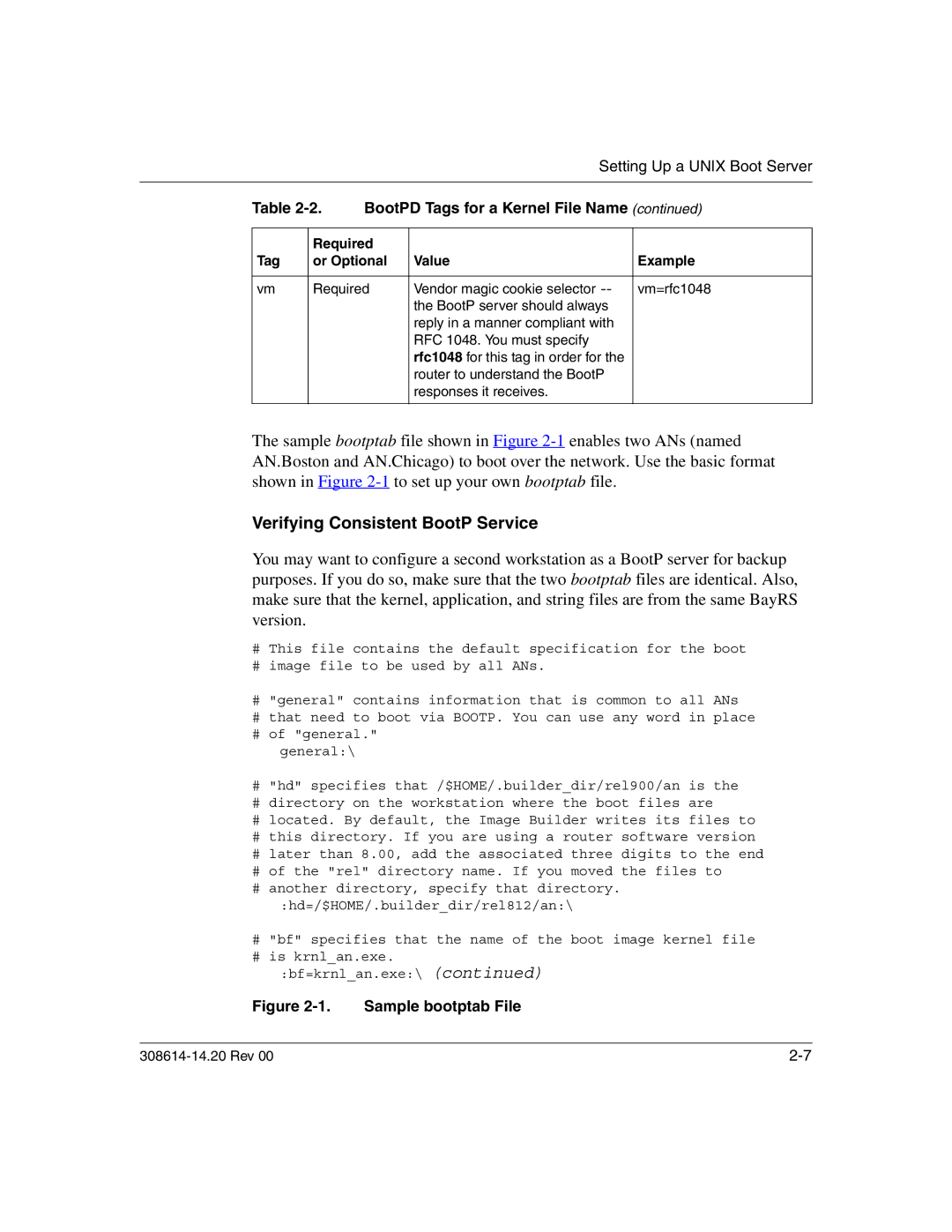
Setting Up a UNIX Boot Server
Table | BootPD Tags for a Kernel File Name (continued) | |||
|
|
|
| |
| Required |
|
| |
Tag | or Optional | Value | Example | |
|
|
|
| |
vm | Required | Vendor magic cookie selector | vm=rfc1048 | |
|
|
| the BootP server should always |
|
|
|
| reply in a manner compliant with |
|
|
|
| RFC 1048. You must specify |
|
|
|
| rfc1048 for this tag in order for the |
|
|
|
| router to understand the BootP |
|
|
|
| responses it receives. |
|
|
|
|
|
|
The sample bootptab file shown in Figure
Verifying Consistent BootP Service
You may want to configure a second workstation as a BootP server for backup purposes. If you do so, make sure that the two bootptab files are identical. Also, make sure that the kernel, application, and string files are from the same BayRS version.
#This file contains the default specification for the boot
#image file to be used by all ANs.
#"general" contains information that is common to all ANs
#that need to boot via BOOTP. You can use any word in place
#of "general."
general:\
#"hd" specifies that /$HOME/.builder_dir/rel900/an is the
#directory on the workstation where the boot files are
#located. By default, the Image Builder writes its files to
#this directory. If you are using a router software version
#later than 8.00, add the associated three digits to the end
#of the "rel" directory name. If you moved the files to
#another directory, specify that directory.
:hd=/$HOME/.builder_dir/rel812/an:\
#"bf" specifies that the name of the boot image kernel file
#is krnl_an.exe.
:bf=krnl_an.exe:\ (continued)
